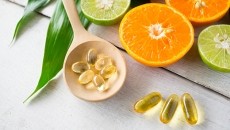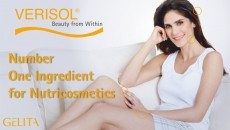Cyanotech gains novel foods go-ahead for astaxanthin
light to sell its astaxanthin in the EU under novel foods
regulations, opening up a new market that it says has great
potential for the antioxidant ingredient.
Cyanotech approached the UK's Foods Standards Agency to seek approval under European novel foods legislation last year, claiming substantial equivalence to a H. pluvialis astaxanthin-rich algal meal, which was sold to European consumers by the Swedish company Astacarotene (now owned by Fuji Chemicals, Japan) before May 15 1997.
Under the legislation, novel foods are those that were not consumed to a significant degree in the EU before that date, the date the original legislation came into force.
The approval opens up the 27 member-state strong EU to the company, with a combined population of 487m. "Europe is the ideal market for BioAstin," said Cyanotech's CEO and Founder, Gerald Cysewski, PhD. "Europe's demographics in terms of age, income and education levels match perfectly with BioAstin's uses and benefits."
Astaxanthin is produced by the haematacoccus pluvialis algae when water supplies in its habitat dry up to protect itself against the effects of UV radiation.
This microalgae is part of the diet of fish or crustaceans, such as salmon and shrimps, and is responsible for the pink colour in their flesh.
Cyanotech markets it BioAstin line in the US as protecting the skin from the damaging effects of ultraviolet radiation, enhancing the immune system, and enhance energy metabolism.
It holds three usage patents: for carpal tunnel syndrome, for cold and canker sores, and as an internal and topical sunblock.
Although dried H. pluvialis is currently sold in the EU, and has been contained in supplements for at least the last 11 years, Cyanotech's ingredient is an astaxanthin-rich extract.
The company offers two supercritical CO2 extract oleoresins under the BioAstin brand: SCE5 containing 5 percent natural astaxanthin and SCE7 containing 7 per cent natural astaxanthin.
Both also contain other mixed carotenoids and are standardised with high oleic safflower oil.
However it cannot expect to be along in the market.
Sweden's BioReal was already granted substantial equivalence for its AstaREAL L-10, to be used in supplements in Europe.
Annual growth of the global market for astaxanthin for human use is thought to be at least 15 per cent, with current estimates valuing the market at $15-20m (€12.4-16.6m) per year.
The main markets for the ingredient are said to be Asia and the US, with Europe lagging three or four years behind.
Although the market in Europe is growing, there is not so much awareness at both customer and retailer level.











